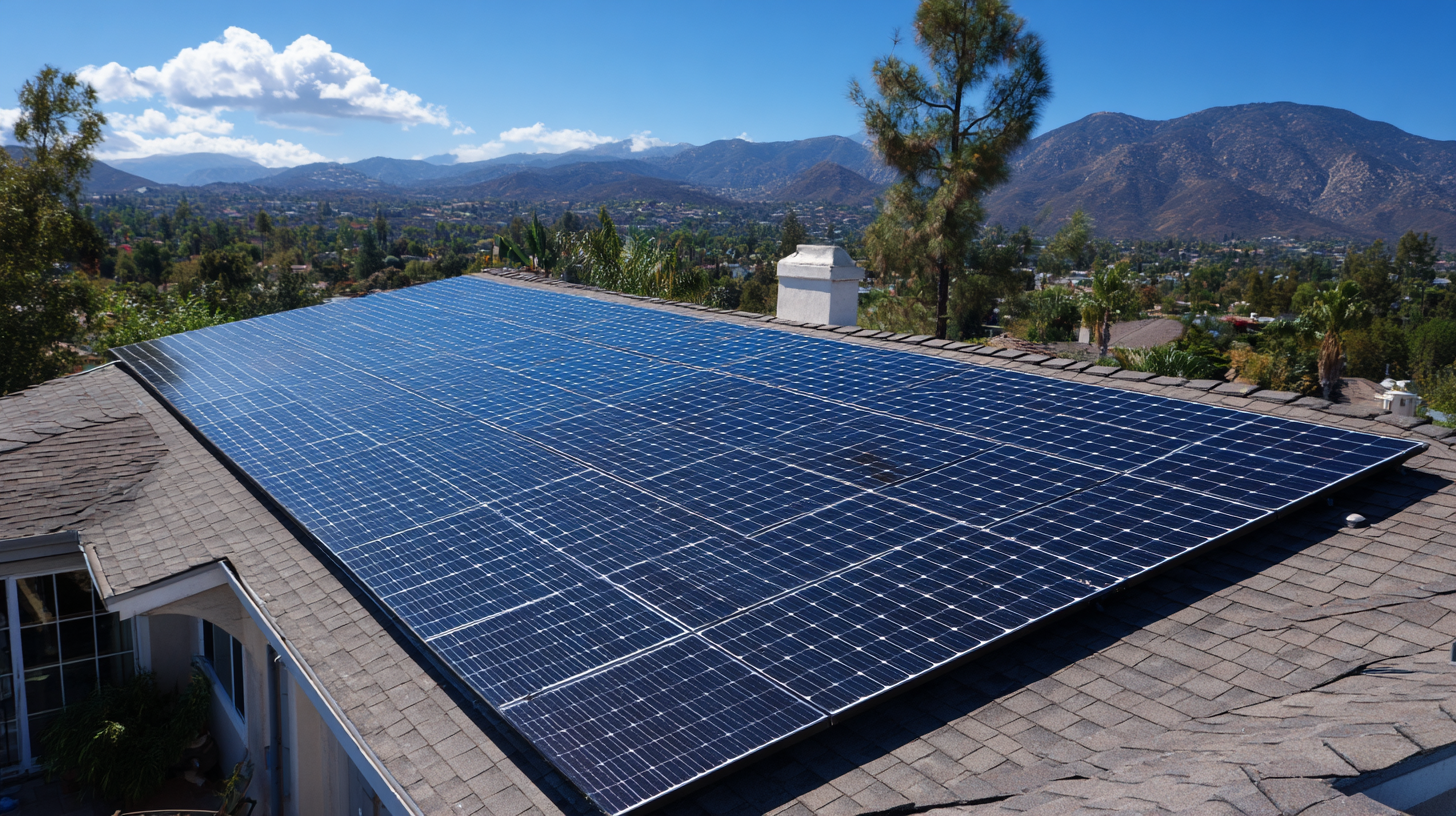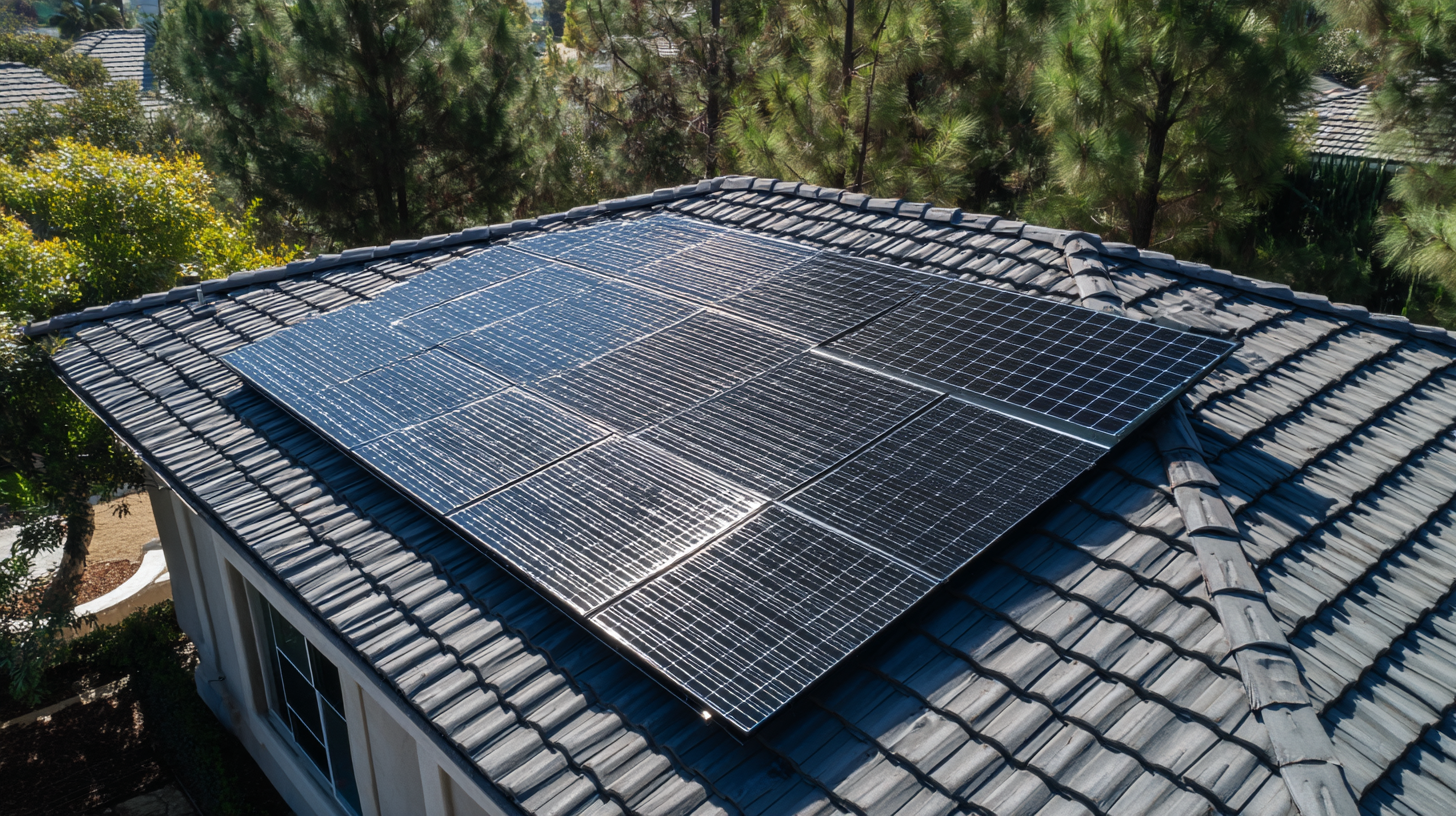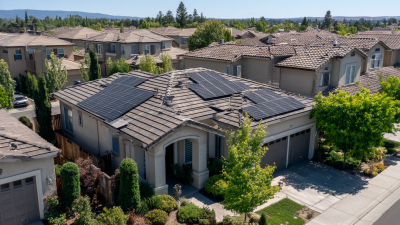MH Energy Your Better Solar and Energy Partner
Leave Your Message
MH Energy Your Better Solar and Energy Partner
As the world increasingly shifts towards renewable energy, the importance of efficient Solar Panels Battery Storage cannot be overstated. According to Dr. Emily Carter, a leading expert in solar energy systems, “Maximizing the efficiency of battery storage is essential for harnessing solar energy’s full potential.” With the rising costs of electricity and the growing demand for sustainable solutions, optimizing battery storage has become a critical task for homeowners and businesses alike.

In this article, we will explore various strategies to enhance the efficiency of Solar Panels Battery Storage systems, ensuring that you can achieve optimal energy savings. From understanding the technologies involved to implementing practical tips, our discussion will provide you with actionable insights. By following these guidelines, you can not only reduce your energy bills but also contribute to a greener planet. Join us as we delve into the best practices for leveraging Solar Panels Battery Storage to its fullest capacity.
When considering the integration of solar panels and battery storage systems, understanding the fundamentals is crucial for maximizing energy efficiency. According to the Solar Energy Industries Association (SEIA), the efficiency of solar panels typically ranges from 15% to 22%, depending on the technology used. By properly pairing these panels with a robust battery storage system, homeowners can ensure that excess energy generated during peak sunlight hours is effectively stored for use during the evening or on cloudy days, minimizing reliance on the grid.
Battery storage systems, such as lithium-ion batteries, have seen significant advances, with prices dropping by over 70% since 2010, according to the International Renewable Energy Agency (IRENA). This reduction not only makes solar energy more accessible but also highlights the importance of selecting the right storage capacity based on individual household energy consumption patterns. The optimal battery size can increase self-consumption rates as high as 90%, allowing users to shift and store energy, leading to substantial savings on energy bills. Understanding these basics can empower users to make informed decisions in creating a sustainable and cost-effective energy system.
When it comes to maximizing solar panel battery storage efficiency, choosing the right type of battery is crucial.
Lithium-ion batteries have become the go-to option for many homeowners and businesses due to their superior energy density, longer lifespan, and faster charging capabilities compared to traditional lead-acid batteries. They typically offer a higher usable capacity, allowing you to store more energy from your solar panels for later use.
Additionally, lithium-ion batteries have a cycle life of around 5,000 to 10,000 cycles, which means they can last significantly longer, leading to lower replacement costs over time.
Conversely, lead-acid batteries, while less expensive initially, have a much shorter lifespan and lower depth of discharge. Their cycle life averages about 500 to 1,000 cycles, resulting in a more frequent need for replacement. Moreover, lead-acid batteries require regular maintenance and can be less efficient in terms of energy output, particularly in high temperature conditions.
In summary, while both lithium-ion and lead-acid batteries can store energy for solar panel systems, lithium-ion options provide greater efficiency and longevity, making them a more optimal choice for maximizing energy savings.
Implementing Smart Energy Management Systems (SEMS) is crucial for enhancing the efficiency of solar panel battery storage. These sophisticated systems monitor energy production and consumption patterns in real time, enabling users to optimize the use of stored energy. By integrating smart technology with battery storage, homeowners and businesses can automatically adjust their energy consumption based on availability.
For instance, energy usage can be shifted to times when solar energy generation is high, reducing reliance on battery power during peak demand hours.
Moreover, SEMS can facilitate predictive analytics that allow users to anticipate energy needs based on historical data and weather forecasts. By leveraging this information, users can preemptively charge their batteries or draw power from them at the most advantageous times. This not only maximizes battery utilization but also significantly lowers energy costs. Ultimately, adopting a smart energy management system empowers users to make informed decisions about their energy consumption, leading to optimal savings and a more sustainable approach to energy use.

Utilizing solar forecasting tools is essential for maximizing energy capture and enhancing grid benefits. By predicting solar energy production accurately, these tools inform homeowners and businesses about peak sunlight hours and potential fluctuations in energy output. This foresight allows users to optimize the timing of energy consumption, ensuring that appliances and systems operate during periods of higher solar generation. By aligning energy use with solar availability, individuals can minimize their reliance on battery storage during low sunlight periods, thus improving overall energy efficiency.

Moreover, integrating solar forecasting with battery storage systems can lead to significant cost savings. These tools can help determine the best times to charge batteries and when to discharge stored energy, balancing load and reducing electricity costs during peak demand periods. By effectively managing the interplay between solar energy production, battery usage, and grid interaction, users not only enhance their energy independence but also contribute to a more stable and reliable energy grid. This holistic approach to solar energy management can substantially amplify the financial and ecological benefits of solar panel installations.
Maintaining and upgrading solar battery systems is crucial for ensuring optimal energy savings. According to the National Renewable Energy Laboratory (NREL), improving battery performance can enhance overall solar energy efficiency by up to 30%. Regularly checking the battery's state of charge and ensuring it operates within recommended temperature ranges are fundamental maintenance practices. High temperatures can degrade lithium-ion battery life by as much as 20%, while keeping the environment stable can prolong longevity and performance significantly.
In addition, implementing software upgrades can lead to enhanced efficiency by optimizing charge cycles and energy usage. A report by the International Renewable Energy Agency (IRENA) indicates that advanced battery management systems can improve the efficiency of charge and discharge processes by an average of 15%. These systems help in tracking performance metrics and diagnosing potential issues before they affect service. Adopting these best practices not only boosts the performance of solar battery systems but also translates to substantial savings in energy costs over the long term.
| Aspect | Best Practices | Maintenance Tips | Recommended Upgrades |
|---|---|---|---|
| Battery Type | Use lithium-ion batteries for higher efficiency | Check battery connections regularly | Upgrade to dual battery systems for efficiency |
| Charge Cycles | Avoid deep discharges to prolong battery life | Maintain optimal charging temperatures | Install a smart inverter for better charge management |
| Energy Management | Use energy management systems to monitor usage | Inspect system regularly for faults | Consider adding solar tracking systems |
| Usage Patterns | Adjust appliance usage to peak solar hours | Schedule regular performance audits | Upgrade to more energy-efficient appliances |
| Safety Measures | Ensure proper ventilation for batteries | Use protective gear during maintenance | Invest in battery management systems |






